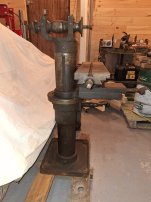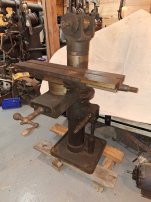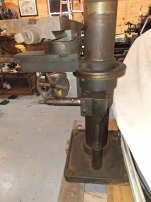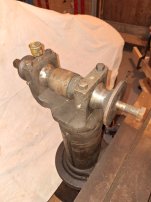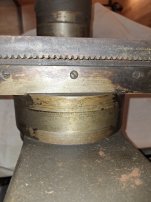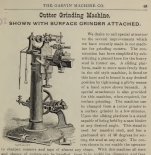Ah, OK. Mine feeds with the rack.
I would think that screw feed would be a pain, to say the least, for a T&C grinder. Takes so long to move the table with the screw.
The rack feed is great, because being dry grinding, one tends not to take much of a cut, but rather take a lot of lighter cuts. That would have been even more of an issue back then, because with plain carbon tool steel, heat is a lot more of an issue than with HSS, where it is hard to do damage.
The fact that it has a rack suggests that there may have been an optional feed type. If so, I bet the screw feed version died a quick death.
Maybe that is why there are few units of the type. The rack feed style may exist, and we just don't realize the connection between this and whatever the rack feed version looks like.


